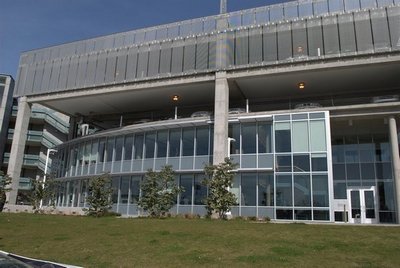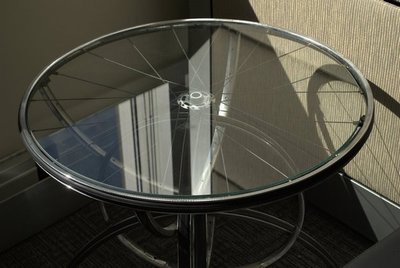May 6, 2010
New University Transportation Center seeks highest LEED rating
While many on campus may not have noticed, four Transportation Services units — Commuter Services, Transportation Improvement, Shared Services and Transportation Administration — moved into a new home at the end of March. The new consolidated space, called the University Transportation Center (UTC), is located in the bottom of the new Portage Bay Parking Facility on NE Pacific Street and 15th Avenue Northeast.
Transportation Services has been working with Capital Projects to meet LEED (Leadership in Energy and Environmental Design) certification for the space. The UTC is only the second LEED CI (Commercial Interiors) project on campus, the other being the Benjamin Hall Interdisciplinary Research Building, opened in 2007. LEED CI ratings are applicable to tenant improvements of new or existing office space. “We’re anticipating the highest rating possible,” said Clara Simon, sustainability manager in Capital Projects.
Some of the unique sustainable features of the UTC that contribute to LEED certification include bicycle storage and locker rooms with showers to encourage bicycle commuters; low-flow water fixtures; an EnergyStar refrigerator; and 30 percent used furniture. All paints, coatings, adhesives and furniture comply with strict limits on volatile organic compounds and the building was flushed with 100 percent outside air before TS moved in. The space is designed to use day lighting, and the energy-efficient lighting system automatically adjusts light levels depending on the amount of daylight in the room. Building materials were purchased within a 500 mile radius and lumber was certified for sustainability.
While Simon is still waiting for the final numbers on total recycled materials used in the building, she was able to share that a 95 percent construction waste recycling rate was achieved for the project. The building is projected to save 36 percent of water and 35 percent of energy from lighting alone, as compared to the national standard. The parking garage will also include a UCAR key system and four UCARs, a pay-by-space machine for visitor parking and an electric vehicle charging station. The charging station is the first to be installed as a part of a LEED project on campus.
The project has been in the works for the last eight years and is financed primarily with funds from Sound Transit’s use of University property. The University received $10 million when it agreed to let the light rail project use the E-11 parking lot south of Husky Stadium as a six-acre construction site. A 100-stall area will be permanently lost to the new light rail station. Some of the money received went toward constructing the Portage Bay Parking Facility which, in part, offsets the parking spaces lost and helps to serve clients from Health Sciences and Bioengineering who had been utilizing the E-11 lot.
The balance of the cost for the garage is financed with debt, which will be paid off at a rate of just over 1 percent of Commuter Services’ budget each year. When the West Campus Garage (now the Portage Bay Parking Facility) was identified for renovation, the decision was made to “carve out space to create an office,” as Peter Dewey, assistant director of Transportation Services, describes it. Until now, Transportation Services has occupied buildings such as the Bryant Building and the Purchasing and Accounting Building. The move to the new space frees up much of the Bryant Building and the basement of the Purchasing and Accounting Building where Commuter Services had been since 1985. The new building will better serve customers, both through a more centralized and easier-to-reach location and through money saved by gaining efficiency in a consolidated space.
“Customers comment on how much lighter and brighter our lobby is,” says Kay Dumlao Doherty, Commuter Services’ sales and administration supervisor. “They find us easy to locate, they are grateful that we’re able to provide more customer parking and they like the one-stop shopping they get from having all of Commuter Services together. By far, the most common comment has been ‘Nice digs!'”
Staff can now work together more easily with reduced travel times, which will save customers money. The total annual projected savings from the new building, which includes measures such as staff travel time, vehicle use and energy savings, is $96,446, according to Commuter Services’ annual cost savings report.
“We are excited to have achieved so many of our goals with this project,” says Josh Kavanagh, director of Transportation Services. “First of all, to reflect the University’s sustainability vision and Transportation Services’ mission, we were determined to create the greenest work space possible within this multipurpose building — and we have met that standard. We have applied for a LEED Platinum certification, and if we do achieve LEED Platinum, we will be the first building on campus to have such a rating. With sustainability as a starting point, we worked to create a workspace that provides the flexibility we need to do our work — now and in the future; one that completes the integration of staff, products and services that comprise Commuter Services; and provides shared spaces for all TS employees to meet. We couldn’t be happier with the result.”
The UTC’s new address is 3745 15th Avenue NE, Seattle, WA, 98105, and the new box number is 355360. Customer auto access to the UTC will be in parking area W27, the first floor of the garage, entering from 15th Ave NE.


